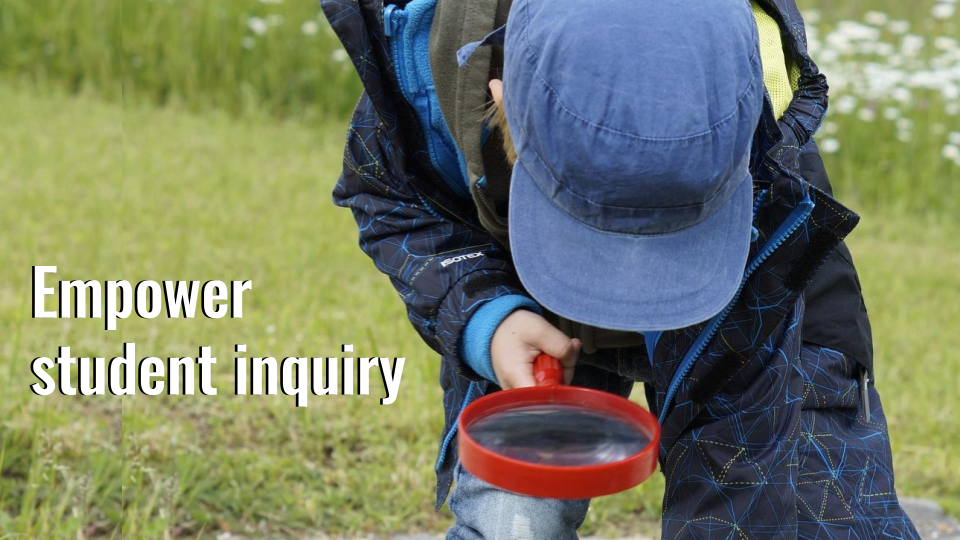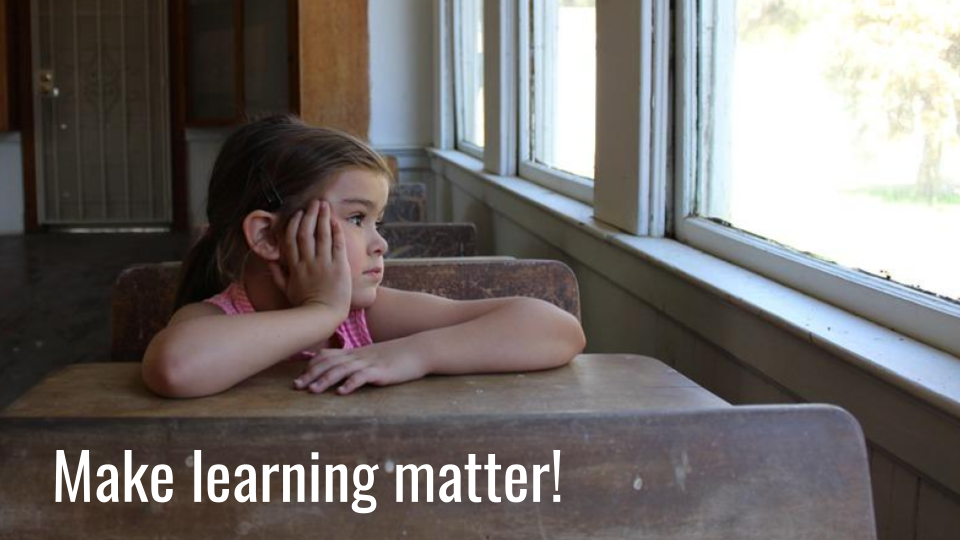Five steps to student-centered learning
Strategies to boost joy and ownership of learning

Today's students need to take ownership of their learning so they can continue learning to thrive far into the future. A student-centered learning environment amplifies student voice, encourages reflection, promotes metacognition and connects learning to the world beyond the classroom. It provides all students with opportunities to think deeply, gain skills essential to their future, while also acting to impact their world right now.
Whether your site is focusing on literacy, STEM, PBL or another initiative, these strategies can help you promote student-centered learning in the classroom across a range of subjects and ages. You too, have a range of priorities, strengths and styles, so employ the ones that make sense for your learning environment.
1. Uncover big ideas
Too much of our classroom focus is on curriculum instruction and not student learning. We need to know the WHY of our content. Not what it is, but why it is important to teach each piece. If it's all important? None of it is.
Work to ensure student learning uncovers big ideas that transfer across disciplines, impacting thinking, action, and behavior in many different contexts.

If we can clearly define goals for skills and understanding, we can move from thinking about what we teach our students to how we teach them. This empowers us to design meaningful tasks that require students to do something with information they can just look up online or ask AI to generate (and think) for them.
2. Focus on questioning
Most of us were taught to listen and absorb, not think or challenge. But the world is changing rapidly. Answers and solutions are temporary. Knowledge will always be useful, but the ability to inquire into new ideas and information helps us thrive in a rapidly-changing world.
Start by modeling interesting questions that are worth investigating. Ask open-ended questions to create a culture that accepts that there might be more than one right answer and that expects students to think on their own.
When we do the questioning, we take away student agency and the opportunity for them to do the work of real learning. So, take the next step and don't ask questions at all. Remember wait time? Use it.

Student questioning doesn't just happen, at least not for all of our learners. You need to teach students how to question. Work questioning activities like I see… I wonder into classroom routines. Provide students with explicit questioning strategies, like the Question-Answer relationship and the Question Formulation Technique.
After students have learned how to ask effective questions… expect them to do so!
3. Give students voice
When we talk, we are in control… we can stick to the curriculum… explain clearly. Celeste Headlee, an interviewer for NPR, flipped a common Stephen Covey quote in the most powerful way: "Don't listen with the intent to reply, listen with the intent to understand."

But more than listening to them, students want us to hear them. Work to amplify and refine their voice so that their ideas have a ripple effect on our world.
Many students would prefer it if you did all the thinking and work for them. But, even these learners thrive when you give them agency, voice, and even responsibility. They need to feel the sense of accomplishment that comes with hard work in order to be motivated to tackle even more.
4. Create positive relationships
Research has shown that a strong relationship with at least one teacher not only impacts academic achievement, but also increases a student's motivation and resilience; providing a stronger sense of well-being and belief in their own abilities. If we are successful, our learners will come to us for assistance because they trust we will use our expertise to help them improve.
We can foster this positive relationship by improving the quality of our feedback. Feedback is neither praise nor evaluation, but a deliberate conversation. Effective feedback uses a few areas of focus, along with actionable ideas students can use. This helps them improve their work and performance, not just for academic purposes, but to be more effective in communicating their ideas and reaching their goals.
Incorporate peer review and self-evaluation into classroom procedures to facilitate student growth and reflection. Be sure to model the explicit skills necessary for peer evaluation so students can learn and provide constructive feedback that is appropriate, effective, and respectful. Don't wait until students are older to ask them to be active participants and supporters of everyone's learning!
5. Make it matter!
Connect what students do in the classroom to the world beyond it. Bring in an expert, face-to-face or over video chat. Make their work meaningful by clearly showing them how it is relevant to the world beyond the classroom.

Better yet? Give purpose to student learning by bringing your classroom into the world beyond it. Student work should impact and improve their communities whether they are local, online or even global.
Take a step today
Students want to be agents of their own lives. Give them agency and responsibility so they can make our world a better place. Stop doing the heavy lifting for them too. No more 10-page project packets or slide decks or rubrics or, at least make these with your students so that even if they aren't ready to take charge this time, they will be the next time.
Knowledge is important, but questioning and thinking are crucial for the innovations and change our world needs. A student-centered approach tells all learners that the sky's the limit and provides the freedom and opportunity to get there. So, set your expectations high and step back.
















